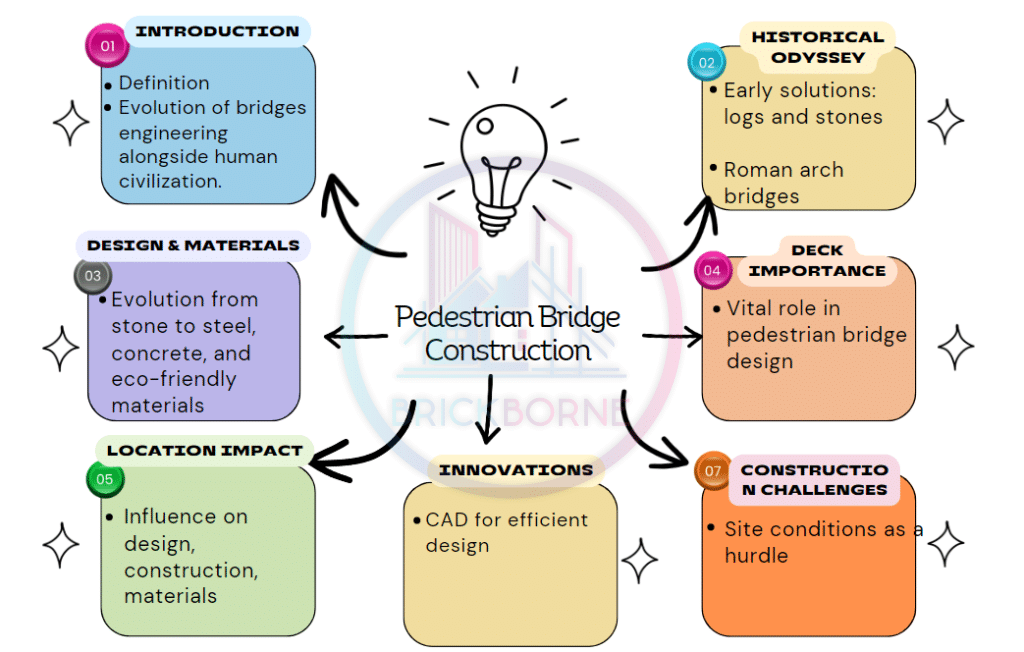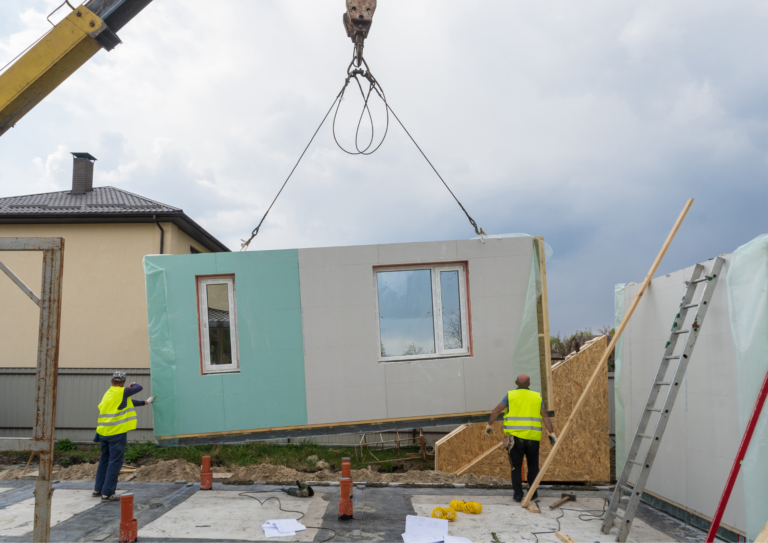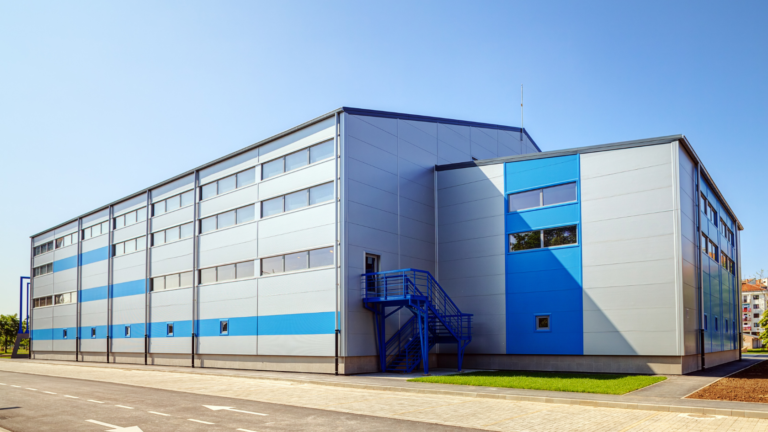A bridge is an arrangement made to cross an obstacle. This obstacle can be a stream, river, valley, or any low ground. The science of bridge engineering developed alongside the development of human civilization. Almost all ancient bridges are pedestrian bridges. In this blog, we will briefly talk about pedestrian bridge construction.

The Historical Odyssey of Bridges:
Bridges have a history dating back to civilizations. In those times people came up with solutions to cross rivers and gaps in the land using logs and stones. The Romans took bridge construction to heights with their arch bridges while the Chinese utilized bamboo and iron chains in crafting their bridges. During times stone bridges adorned towns. Became iconic landmarks with their beautiful arches and buttresses. However, it was, during the Industrial Revolution that bridge design transformed. The introduction of iron and steel revolutionized bridge construction allowing for spans and greater load-bearing capacities.
Design Considerations and Material Innovations:
Designing a good pedestrian bridge requires a balance between its serviceability, aesthetics, and structural stability. Today, architects and engineers consider factors like the landscape, the intended purpose of the bridge, and adherence to safety standards. The materials used in pedestrian bridge construction have also evolved from stone and wood to modern options such as steel, concrete, and composites. Right now, the concept of sustainability has also opened new doors to eco-friendly materials that will be beneficial for both mankind and the environment.
Deck of the Bridge:
The deck is the part of the bridge on which people walk. In other words, it is the pavement part of the bridge. It plays an important part in the design of pedestrian bridges. It needs to be both strong and comfortable for pedestrians. Engineers commonly use concrete or steel to ensure longevity while also considering factors like texture to create a walking surface. The width of the deck is properly planned to accommodate pedestrian traffic.

Location’s Effect on Pedestrian Bridge Construction:
The location of every construction project plays a vital role in its design. A bridge could span a river, connect two buildings, or cross a busy intersection. The location influences the following:
- Most importantly, the Design of the bridge
- Construction Procedures involved.
- Type of materials to be used.
- Span length of the bridge
- The overall aesthetic of the bridge
For example, a bridge over a river might have a different structural design compared to one connecting buildings in a downtown area.
Innovations in Pedestrian Bridge Construction:
Old pedestrian bridges were simple to design and construct. However, the 21st century has brought about a wave of innovation in the construction of pedestrian bridges. Using the Computer Aided Design (CAD) architects and civil engineers have been able to design bridges more efficiently. Smart technologies, such as sensors and monitoring systems are being used in bridges which improves safety, efficiency, and overall functionality. These advancements have contributed to the development of technologically advanced structures.
Challenges in Pedestrian Bridge Construction:
Although mankind has made significant scientific advancements in the near past still, we face certain challenges in the construction of pedestrian bridges. The most important factor is site conditions. Urban spaces are mostly congested which makes it difficult to find a perfect site for the construction of pedestrian bridges. To make construction in congested areas possible, engineers often employ unconventional construction methods or pre-cast components to overcome these challenges. Achieving the right balance between functionality, aesthetics, and minimal environmental impact remains an ongoing challenge in pedestrian bridge construction.
Conclusion:
The story of constructing pedestrian bridges goes way back in time, from ancient river crossings to the bridges we have in cities now. Cities grow and change but these bridges remain standing, telling us a lot about the evolution of bridges. They’re not just paths; they’re symbols of new ideas, connections, and the perfect mix of art and science in how we plan cities today. So, when you walk on a pedestrian bridge, think about the many years of hard work and smart thinking that made it – it’s not just a way across, but a link to where our cities come from and where they’re going.

Brickborne believes in accuracy and time construction without wastage of resources. We believe in economical and sustainable construction. With the advancing world, software is here to assist us in the construction field. Brickborne provides construction drawings as per codes of the region, 3D modeling, rendering, and animation walkthroughs of both interior and exterior, and quantity surveying and cost estimation. Choose us to change your dreams into reality as we say, Brickborne- We Design Your Ideas!





